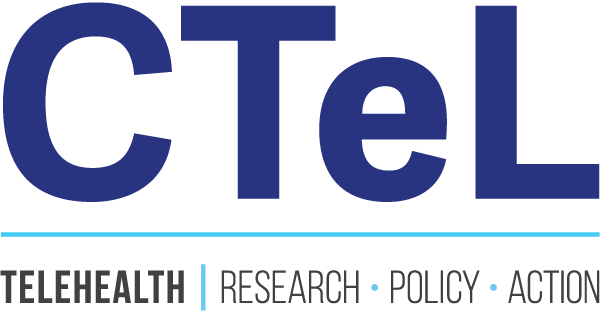Addressing the Healthcare Staffing Crisis: A Call for Virtual Education and Administrative Relief
The healthcare industry is facing an unprecedented emergency. Nursing shortages have placed an unbearable strain on hospitals and care facilities nationwide, with entire communities now feeling the consequences. In Alabama, CitiHealth Hospital in Oneonta was forced to suspend operations—closing its doors—not because of financial struggles, but because there simply weren’t enough nurses to provide care. This is not a one-off incident; across the U.S., the healthcare system is buckling under the weight of this crisis. Nurses are leaving the workforce in droves, with too few entering the profession to replace them.
A Healthcare System on the Brink
The nursing shortage has hit a critical breaking point. Federal authorities project that by 2025, the U.S. will face a shortage of nearly 80,000 full-time registered nurses (RNs). By 2030, that number is expected to hover around 64,000. This isn’t just a staffing inconvenience—it’s a full-blown healthcare crisis. As nurses leave, the remaining staff are forced to work longer hours, take on more patients, and endure relentless pressure. Burnout is rampant, creating a vicious cycle that only worsens the shortage.
At the same time, newly minted healthcare professionals find themselves drowning in administrative work—buried under layers of paperwork, insurance protocols, and regulatory documentation. Instead of focusing on patient care, they are forced to navigate bureaucratic mazes that steal their time, energy, and passion.
“Federal authorities project that by 2025, the U.S. will face a shortage of nearly 80,000 full-time registered nurses (RNs).”
If we don't act now, this ripple effect will result in poorer care for patients and devastating outcomes for hospitals.
Virtual Education: The Key to Expanding the Nursing Workforce
The barriers to nursing education are only adding to the problem. In 2023, 65,766 qualified nursing applications were turned away from U.S. baccalaureate and graduate programs—not because of a lack of interest, but due to a shortage of faculty, clinical sites, and funding. This is unacceptable at a time when healthcare desperately needs more professionals.
One of the most powerful solutions to this bottleneck is virtual education. Online learning platforms provide a flexible, scalable means to train nurses quickly and efficiently, especially in underserved rural areas where traditional educational opportunities are scarce. By embracing virtual education, we can break down geographic barriers and expand access to a new generation of healthcare workers.
More importantly, virtual learning isn't just a stopgap—it's a future-forward solution. It enables working nurses to pursue continuing education, upskill, and specialize, all without taking extended time away from their jobs. In a field where time is a precious commodity, this flexibility is invaluable.
However, it is not enough for virtual education to merely exist—it needs to be embraced as an equal, if not superior, option to traditional, in-person programs. Educational institutions, healthcare organizations, and policymakers must recognize the immense value virtual education brings to the table and invest in its expansion.
Reducing Administrative Burdens: The Hidden Key to Retention
While we work to expand the nursing workforce, we cannot overlook the importance of retaining the nurses we already have. In a 2022 national survey, more than a quarter of registered nurses stated they plan to leave the profession by 2027. This impending mass exodus will deepen the crisis further unless we address one of the primary drivers of burnout: administrative overload.
Technology has the potential to be a game-changer here. By leveraging artificial intelligence (AI), machine learning, and telehealth platforms, we can streamline paperwork, modernize record-keeping, and automate repetitive tasks. Nurses should be spending their time with patients, not drowning in documentation. These innovations can help shift the focus back to patient care—the very reason most healthcare professionals entered the field in the first place.
Moreover, the impact of these technologies goes beyond individual nurses. Hospitals that invest in AI and automation tools will see improved operational efficiency, reduced errors, and a more supportive work environment. By lifting the administrative burden, we create a healthier work culture—one that values nurses for their clinical expertise, not their paperwork-pushing skills.
The Time for Action Is Now
“There are only nine registered nurses for every 1,000 people in the U.S.”
The current staffing shortage is unsustainable. There are only nine registered nurses for every 1,000 people in the U.S., a dangerously low number that correlates directly with increased errors, elevated mortality rates, and heightened burnout. Continuing down this path is too costly—not just financially, but in human lives and professional livelihoods.
Hospitals across the country are grappling with mounting operational pressures. If decisive action isn’t taken, we will see a sharp decline in patients' quality of care. We must prioritize innovative solutions that address both the education and retention of healthcare professionals. Virtual education is a powerful tool to grow the workforce, and reducing administrative burdens will help retain the vital staff we have left.
Healthcare organizations, educational institutions, and policymakers must come together to address this crisis with urgency. Expanding virtual education and easing the administrative load on healthcare professionals are not only necessary—they are critical. The future of healthcare hinges on how we respond to this moment.
We cannot afford to wait.


